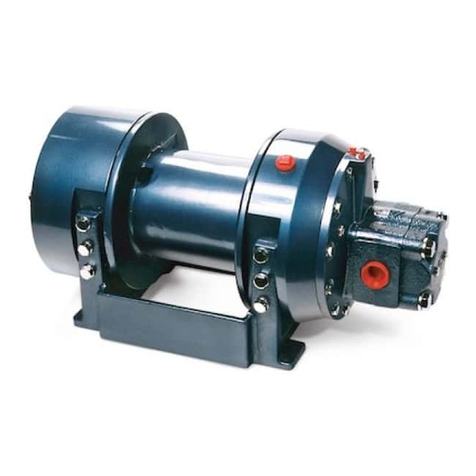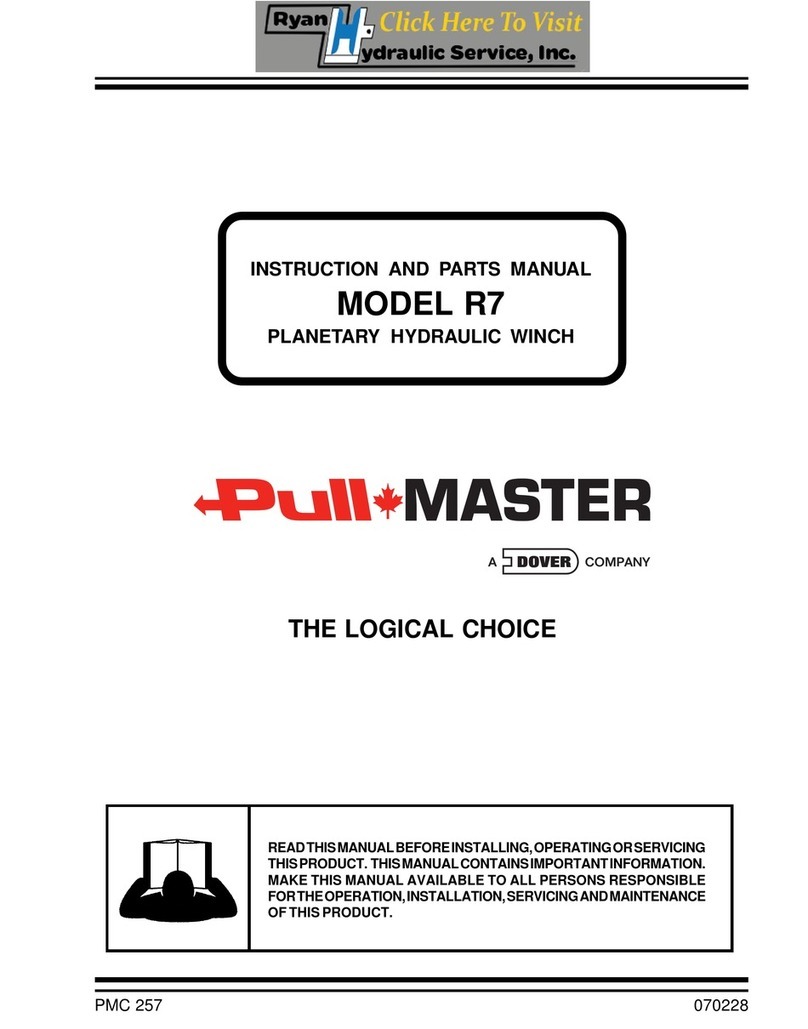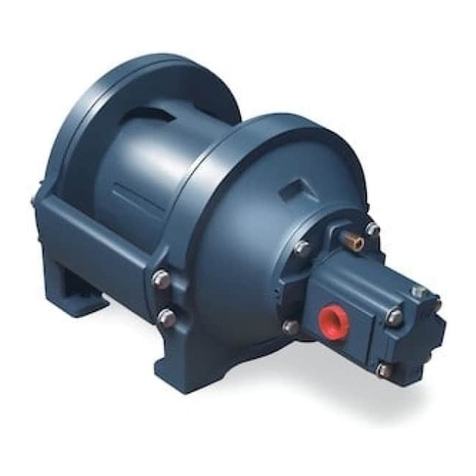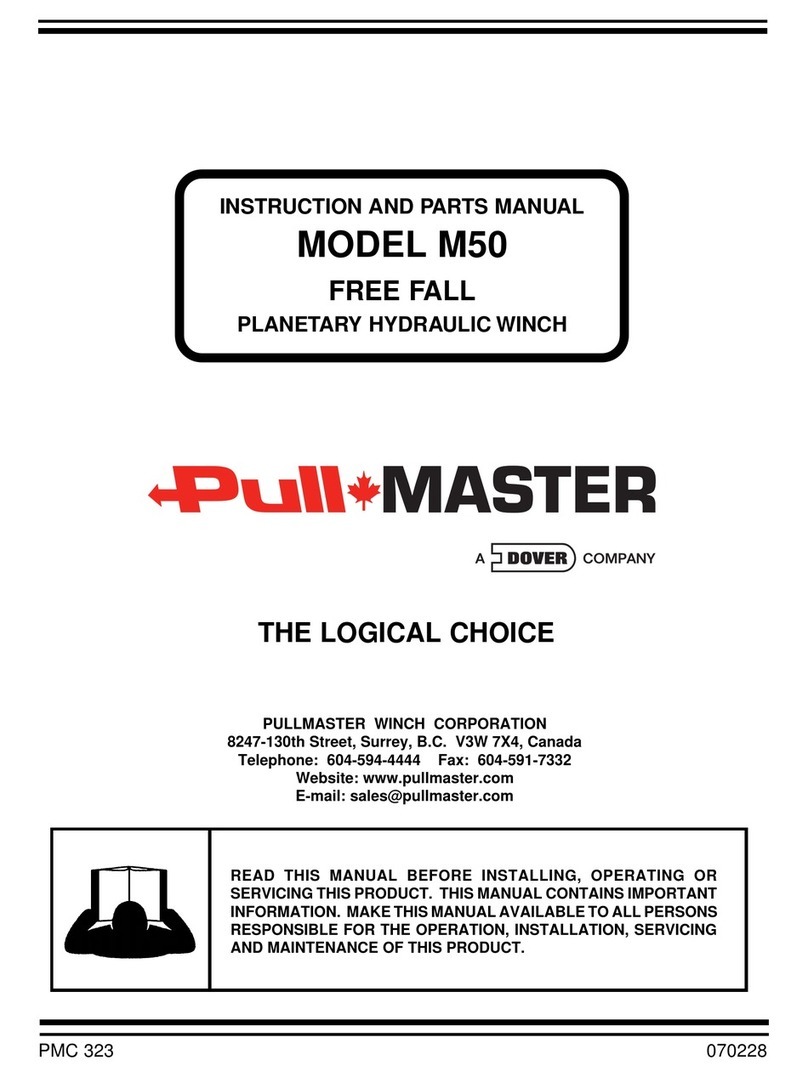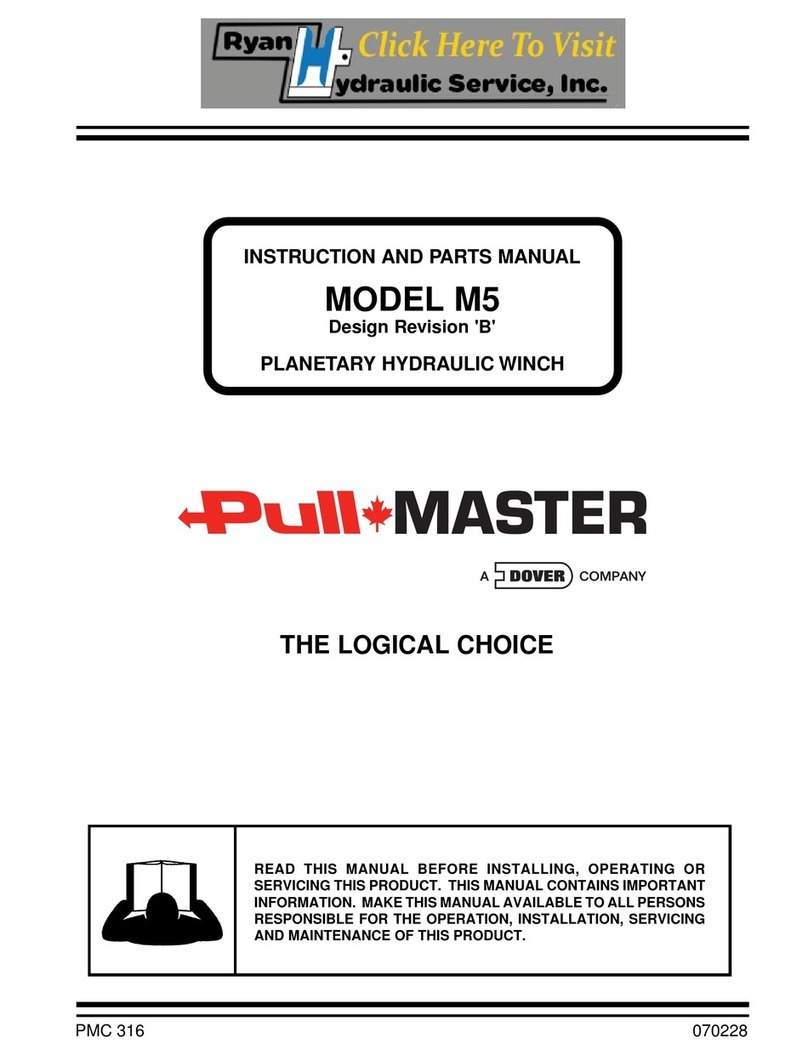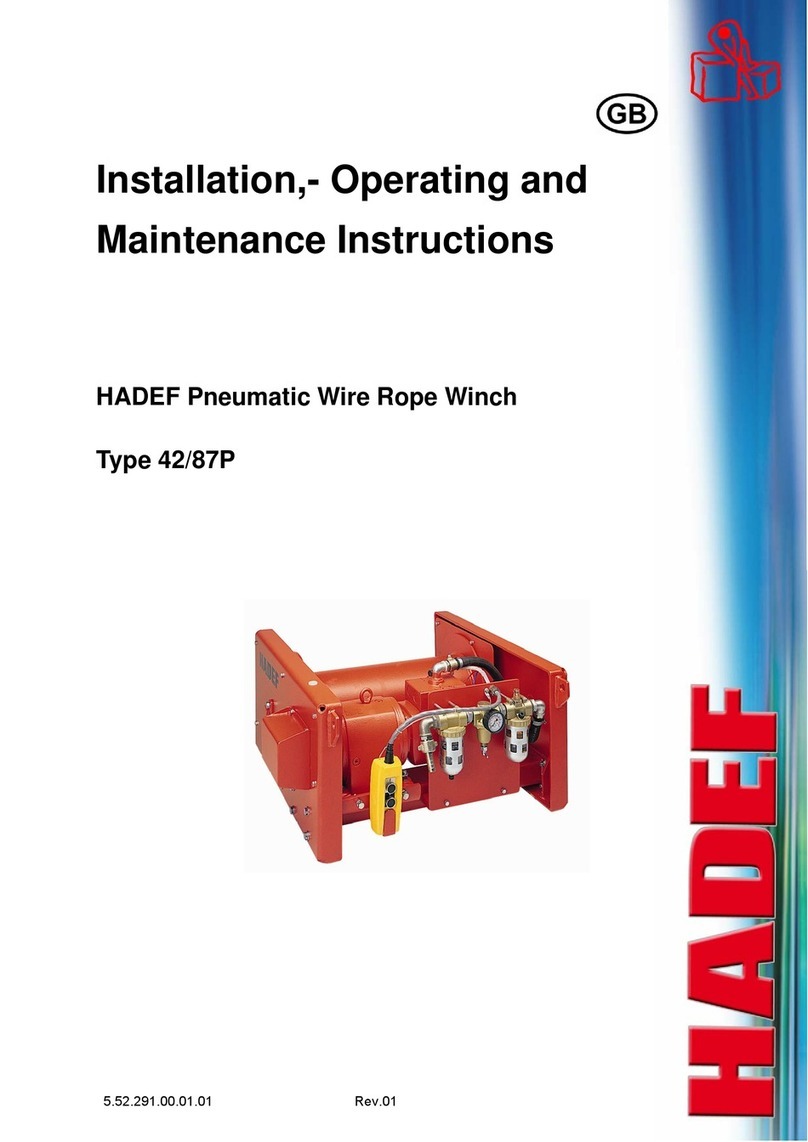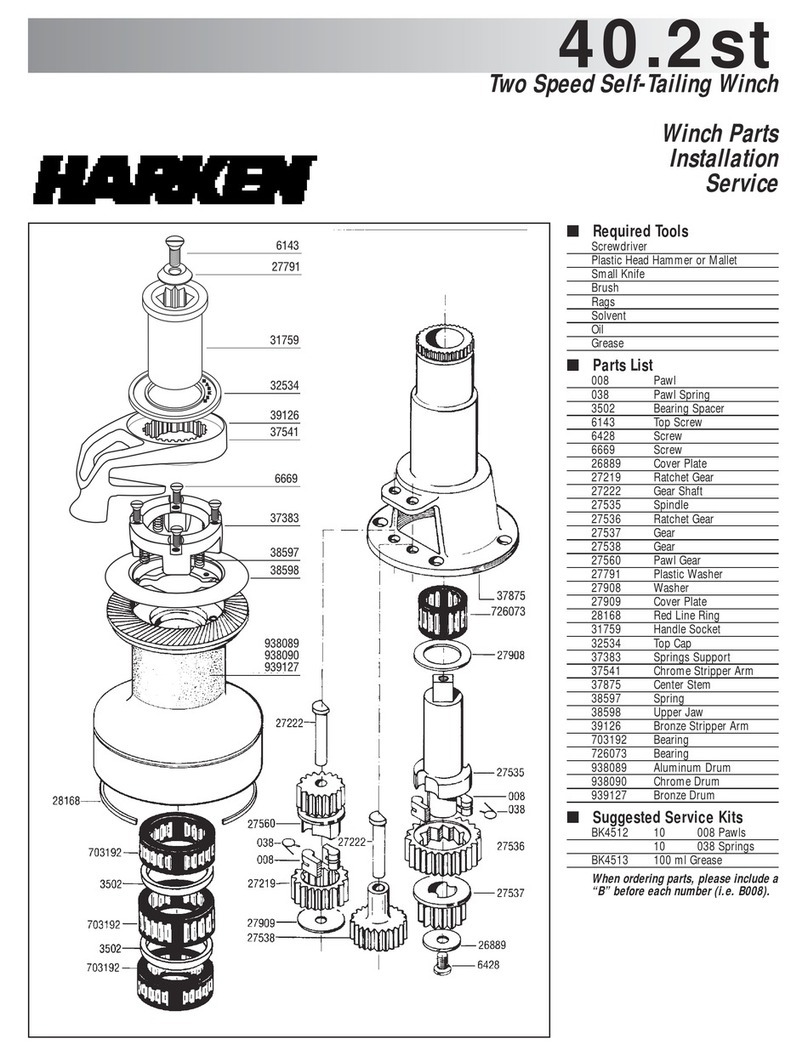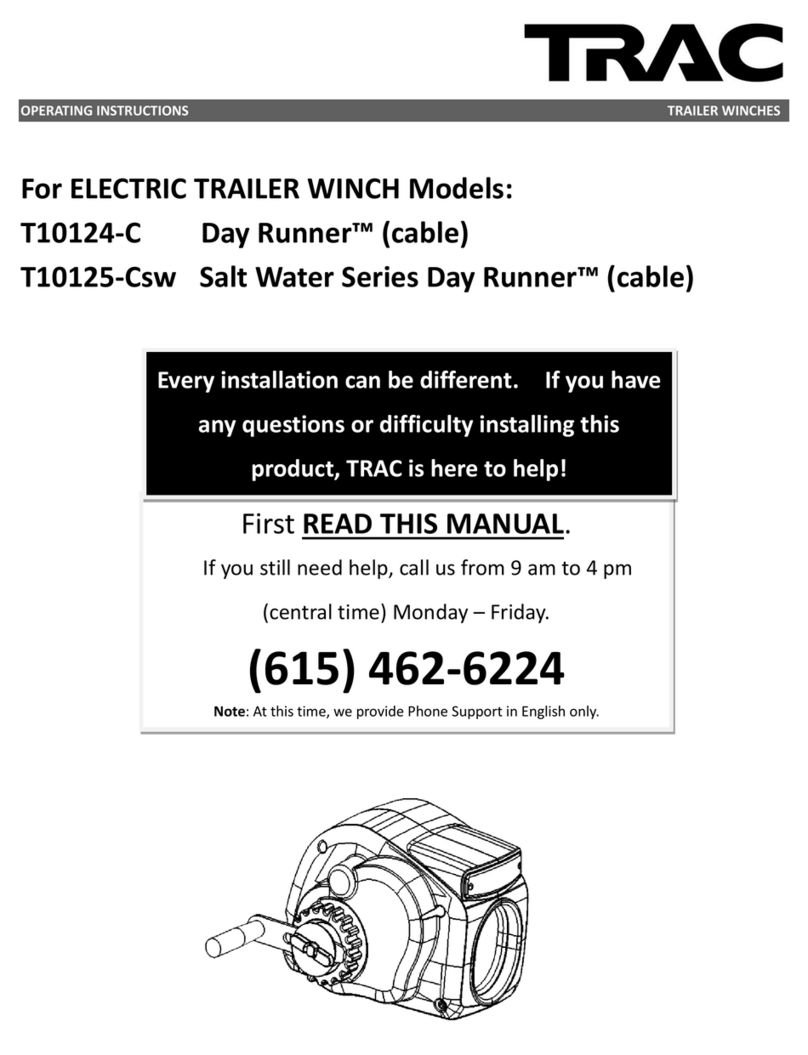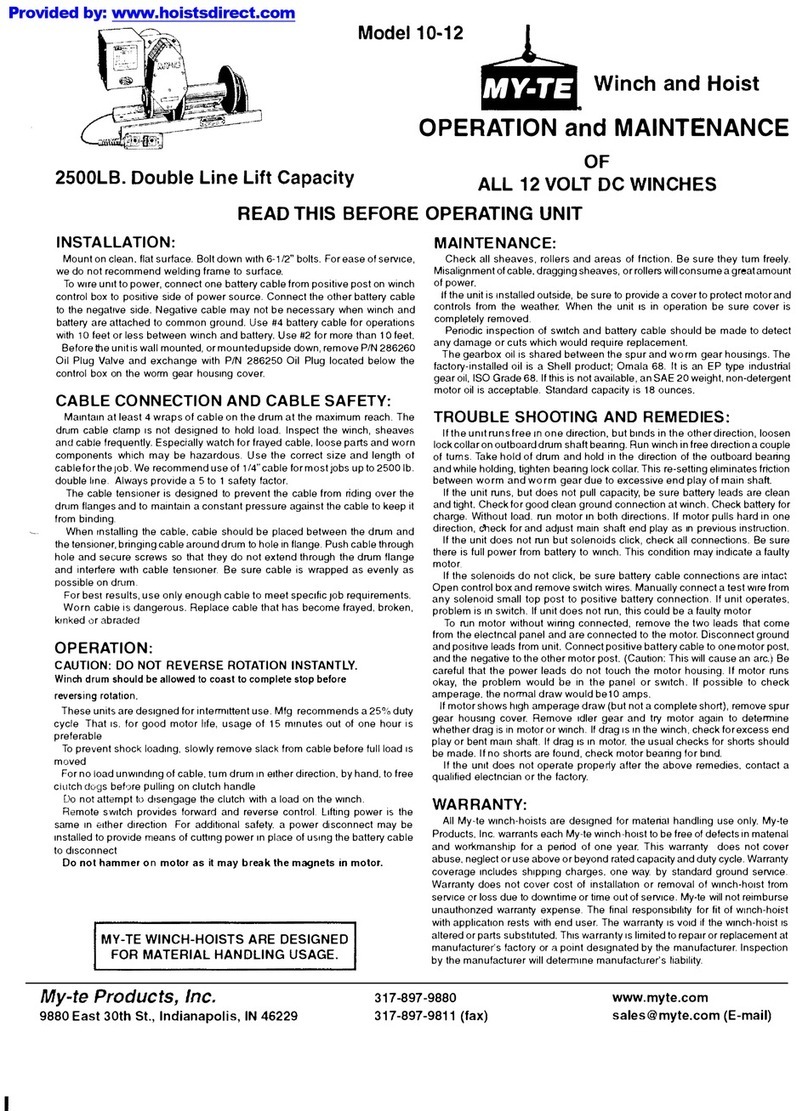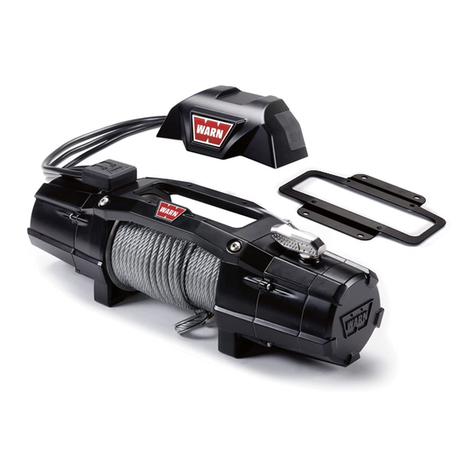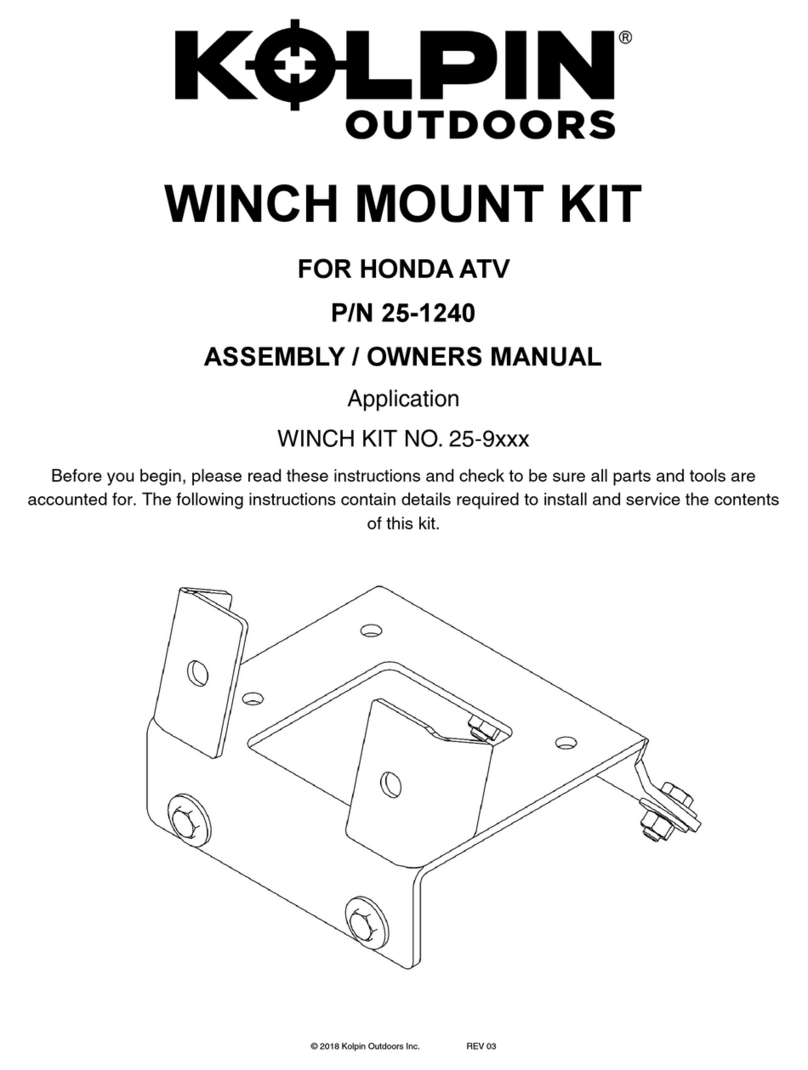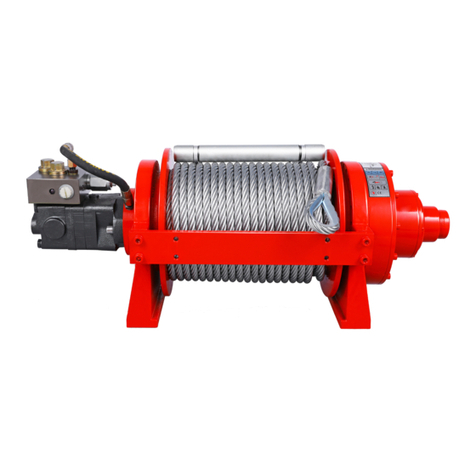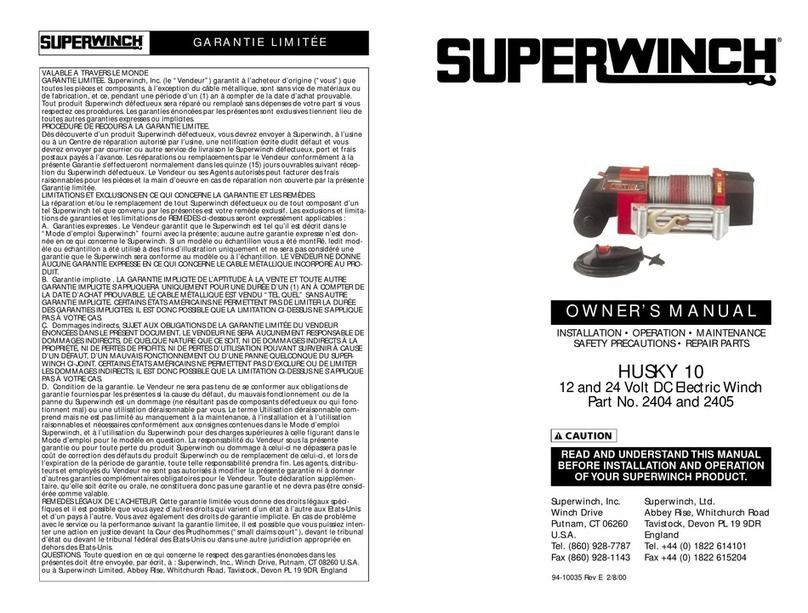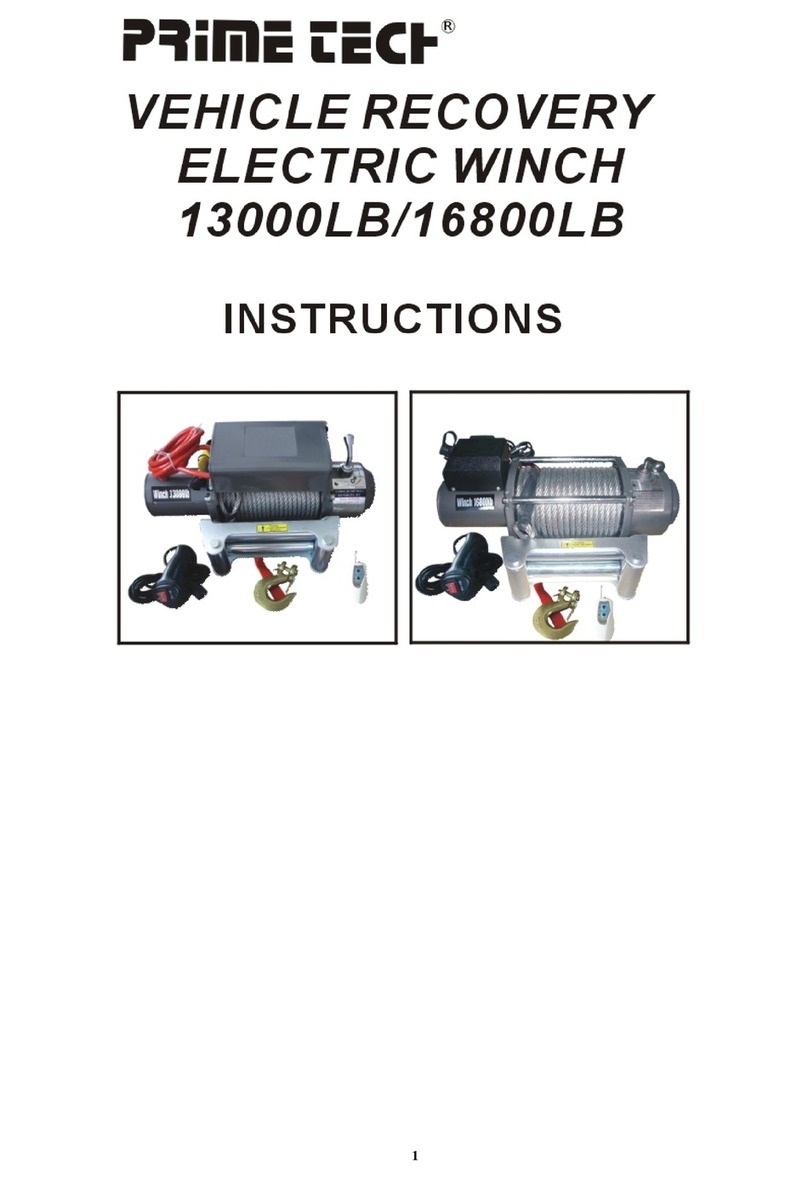
PAGE 11
HYDRAULIC FLUID:
The hydraulic fluid selected for use with PULLMASTER
planetary winches should be a high grade, petroleum
based fluid, with rust, oxidation and wear resistance.
Fluid cleanliness and operating viscosity are critical to
winch reliability, efficiency and service life.
For optimum performance, the recommended viscosity
range at operating temperature is 81 - 167 SUS (16 - 36
CS). For extreme operating conditions of short duration,
the maximum viscosity range of 58 - 4635 SUS (10 -
1000 CS) should not be exceeded.
For optimum performance, the winch recommended
hydraulic fluid temperature operating range is 80 -
150F (27 - 66 C). For extreme operating conditions of
short duration, the maximum temperature range of -5
- 180F (-21 - 82 C) should not be exceeded.
LUBRICATION:
The winch gear train requires oil bath lubrication. The
winch is shipped from the factory without lubricating oil.
IMPORTANT: ADD LUBRICATING OIL BEFORE
RUNNING WINCH.
Refer to INSTALLATION DIMENSIONS for location of
lubricating oil fill port. Refer to APPENDIX A for quantity
of oil required. For normal operating temperature use
SAE 90 lubricating oil. Consult lubricating oil supplier or
factory for temperatures beyond normal operating
range.
The final drive of the winch is lubricated by the hydraulic
oil which is circulated through the free fall housing.
HYDRAULIC PUMP:
For maximum performance of the PULLMASTER
planetary winch, the hydraulic pump must supply the
maximum flow of hydraulic fluid at the hydraulic pressure
stated in SPECIFICATIONS.
HYDRAULIC WINCH CONTROL VALVE:
The standard control valve used for operation of the
PULLMASTER planetary winch must have a four-way,
spring return to neutral feature, which provides for open
flow from the pressure ports of the winch to the reservoir
in neutral position of the control (motor spool). It is
important to point out that good speed control, especially
when lowering a load, depends on the “metering”
characteristics of the control valve. The better the oil flow
is "metered" the better will be the speed control.
HYDRAULIC PRESSURE RELIEF:
The hydraulic circuit for the PULLMASTER planetary
winch requires a pressure relief set at the operating
pressure (see SPECIFICATIONS). Usually, a pressure
relief is part of the hydraulic control valve. Where this
is not the case, a separate pressure relief valve must
be installed and set at the recommended maximum
pressure.
HYDRAULIC RESERVOIR:
It is recommended that the hydraulic reservoir has
sufficient capacity to provide good heat dissipation in
order to prevent over-heating of the hydraulic fluid. The
hydraulic reservoir should be made from clean and
scale-free material to prevent contamination of the
hydraulic fluid. In order to prevent air from being mixed
with the hydraulic fluid, the reservoir should have an
over-flow baffle separating the return lines from the
suction line and all return lines should enter the reservoir
below the fluid level. The reservoir should be mounted
close to and above the hydraulic pump in a location
which provides for free air circulation around the
reservoir.
HYDRAULIC HOSES:
The following hydraulic hoses are recommended for
maximum efficiency of the PULLMASTER Model M25
planetary winch with free fall:
Pressure lines: Equivalent to SAE 100R 12-32
Circulation return line: Equivalent to SAE 100R 4-16
Circulation supply line: Equivalent to SAE 100R 6-6
Free fall release line: Equivalent to SAE 100R 3-4
It is recommended that a larger size of hydraulic hose
is installed where the pressure lines or the circulation
lines are excessively long.
HYDRAULIC FILTER:
Hydraulic filter recommendations for the hydraulic
circuit of the PULLMASTER planetary winch, based on
a return line filter, are given as follows:
Average Atmosphere: 10 microns
Dusty Atmosphere: 5 microns
In order to prevent accidental stoppage of the return
line flow, the oil filter should have a by-pass feature.
RECOMMENDATIONS
261 REV.021029




















